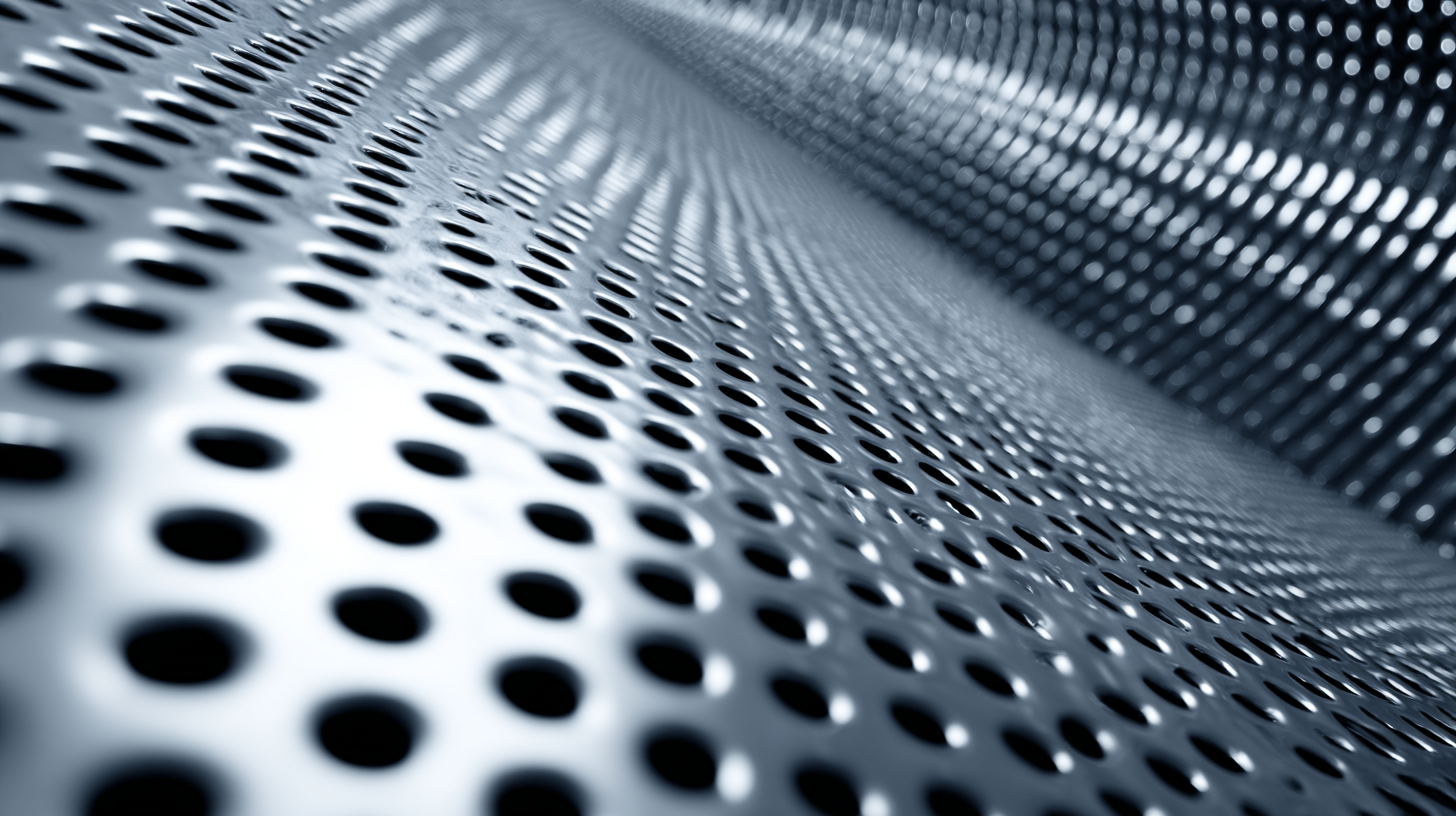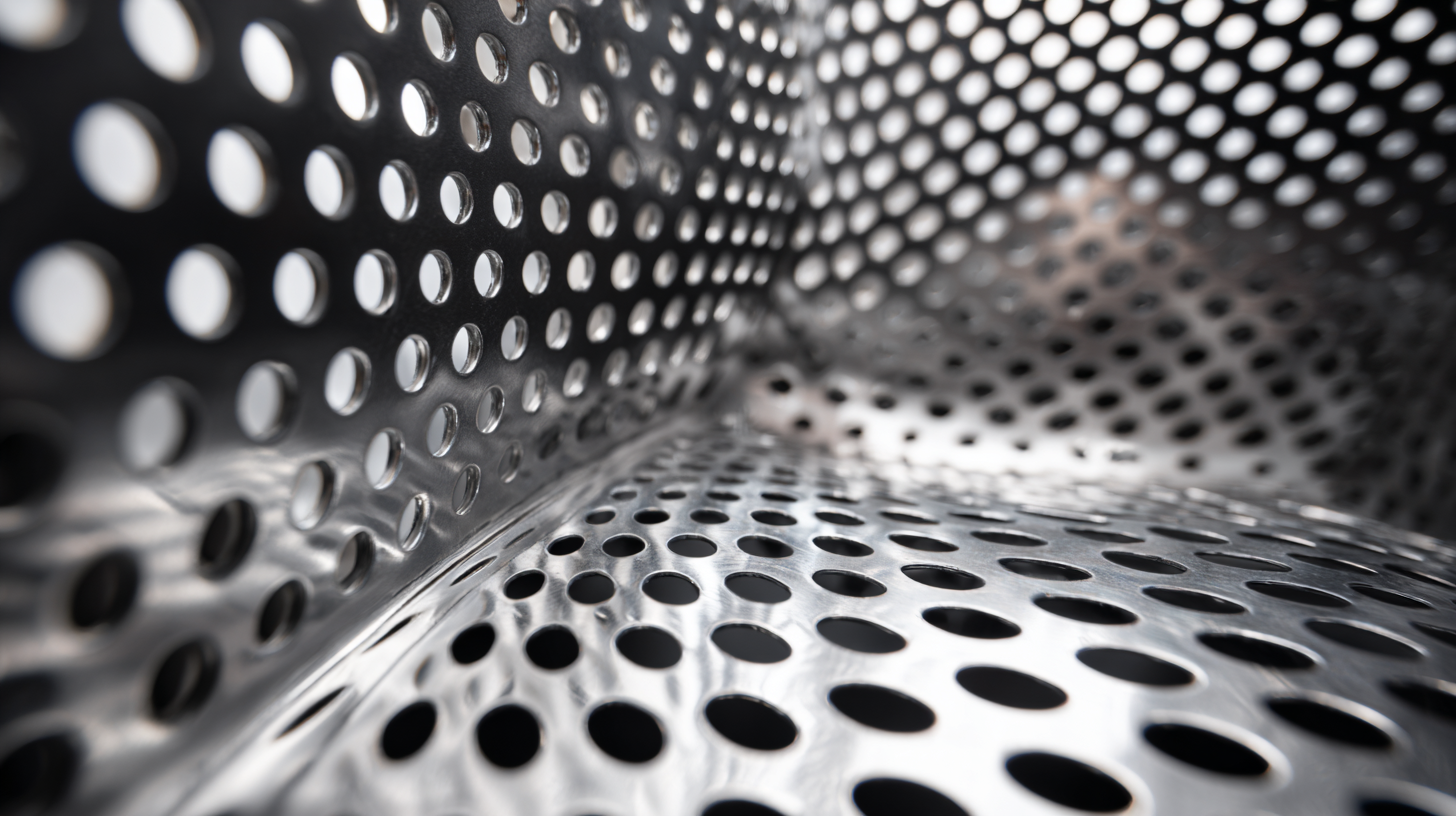Cart
Understanding the Versatility of Perforated Sheets: Applications and Benefits in Modern Design
The versatility of perforated sheets in modern design cannot be understated, as they bridge functionality and aesthetics across various industries. According to a recent market analysis by Smithers Pira, the global market for perforated materials is projected to reach $3.5 billion by 2025, highlighting an increasing demand for innovative and sustainable design solutions. Perforated sheets have become indispensable in architecture, interior design, and automotive applications, owing to their ability to enhance acoustic performance, control light and air circulation, and provide visual interest. Furthermore, their lightweight nature and recyclability contribute to a more sustainable approach in design practices. As industries continue to evolve, understanding the applications and benefits of perforated sheets will be crucial for designers seeking to meet both functional requirements and aesthetic aspirations in their projects.

Exploring the Diverse Types of Perforated Sheets in Modern Design
Perforated sheets have increasingly gained popularity in modern design due to their versatility and aesthetic appeal. These sheets come in various materials, including metal, plastic, and wood, and can feature different hole patterns and sizes, catering to diverse design needs. For instance, metal perforated sheets are often utilized in architectural applications, such as facades and screens, where they provide both functionality and visual interest. The use of circular, square, or custom-shaped holes allows designers to create unique visual effects while ensuring adequate airflow and light penetration.
In addition to aesthetics, the functional benefits of perforated sheets are evident across various industries. In acoustic design, for example, they can help manage sound by controlling reverberation in spaces like theaters and auditoriums. Moreover, perforated sheets find practical applications in filtration systems, where they serve to separate particles from fluids effectively. With such a broad range of types and uses, perforated sheets are a testament to modern design's ability to combine creativity with functionality, making them an essential component in contemporary architecture and product design.
Understanding the Versatility of Perforated Sheets: Applications and Benefits in Modern Design
Key Materials Used for Perforated Sheets and Their Unique Characteristics
When it comes to perforated sheets, various materials are employed, each with distinct characteristics that enhance their functionality and aesthetic appeal. Commonly used materials include metal, plastic, and fiberglass.
Metal perforated sheets, often made from aluminum or stainless steel, offer excellent durability and strength, making them ideal for architectural projects and industrial applications. Their resistance to corrosion and high temperatures adds to their versatility in different environments.
Plastic perforated sheets, on the other hand, are lightweight and can be easily molded, making them suitable for a variety of decorative and functional purposes. They are often used in furniture design and acoustic panels due to their sound-absorbing properties.
Fiberglass perforated sheets stand out with their ability to resist moisture and chemicals, which makes them a prime choice for environments that require high hygiene standards, like laboratories and food processing areas.
Tips: When selecting materials for perforated sheets, consider the specific environmental conditions and functional requirements of your project. Always request samples to test durability and aesthetics against your design needs. Additionally, ensure proper spacing and hole diameter to achieve the desired effect in both function and appearance; this can significantly influence the overall success of the installation.
Popular Applications of Perforated Sheets across Various Industries
 Perforated sheets have gained popularity in a variety of industries due to their unique combination of aesthetic appeal and functional benefits. In architecture, these sheets are often used in facades and ceilings, allowing for natural light penetration while reducing glare and enhancing airflow. This not only contributes to energy efficiency but also adds a visually striking element to modern buildings. Meanwhile, in the automotive industry, perforated sheets are utilized in creating lightweight components that improve vehicle performance without sacrificing strength.
Perforated sheets have gained popularity in a variety of industries due to their unique combination of aesthetic appeal and functional benefits. In architecture, these sheets are often used in facades and ceilings, allowing for natural light penetration while reducing glare and enhancing airflow. This not only contributes to energy efficiency but also adds a visually striking element to modern buildings. Meanwhile, in the automotive industry, perforated sheets are utilized in creating lightweight components that improve vehicle performance without sacrificing strength.
Tips: When selecting perforated sheets for design projects, consider the size and pattern of the perforations, as these can dramatically influence both functionality and appearance. Engaging a skilled designer can also help ensure that the sheets are integrated effectively into the overall concept.
Beyond aesthetics, the perforated sheets offer practical applications in the manufacturing sector. They are commonly used for filtration systems, sound dampening, and as protective covers, demonstrating their versatility in enhancing productivity and safety. Designers should evaluate the material options available for perforated sheets to ensure they meet the specific requirements of each application while maintaining the desired look.
Advantages of Using Perforated Sheets in Architectural and Interior Design
 Perforated sheets have emerged as a pivotal element in modern architectural and interior design, offering a blend of functionality and aesthetic appeal. These sheets, characterized by their patterned holes, provide an innovative solution for limiting noise while enhancing light diffusion. This makes them particularly beneficial in urban environments where acoustic control is paramount. Architects can seamlessly integrate perforated materials into facades and interior partitions, creating spaces that cater not only to visual comfort but also to relaxation and privacy.
Perforated sheets have emerged as a pivotal element in modern architectural and interior design, offering a blend of functionality and aesthetic appeal. These sheets, characterized by their patterned holes, provide an innovative solution for limiting noise while enhancing light diffusion. This makes them particularly beneficial in urban environments where acoustic control is paramount. Architects can seamlessly integrate perforated materials into facades and interior partitions, creating spaces that cater not only to visual comfort but also to relaxation and privacy.
In addition to their acoustic benefits, perforated sheets offer significant advantages in terms of design flexibility and sustainability. They are available in various materials, such as metal, plastic, and composite, allowing designers to choose options that best suit their project requirements. The perforations can also be customized in size and pattern, enabling unique and creative designs that enhance a building’s character. Furthermore, perforated sheets can reduce energy costs by promoting natural ventilation and light, making them an eco-friendly choice for modern architecture. As designers strive for innovation, the integration of perforated sheets marks a forward-thinking approach to functional design.
Innovative Design Trends Utilizing Perforated Sheets for Aesthetic Appeal
The increasing demand for digitally printed ceramic tiles reflects a significant trend in modern design, where aesthetics play a crucial role. As perforated sheets find their way into various applications, they are becoming integral in creating visually appealing spaces. The intricate designs made possible through digital printing not only enhance the decor but also allow for personalization, catering to diverse consumer preferences.
Perforated sheets are being utilized innovatively in interior settings, transforming walls, ceilings, and partitions into artful displays. Their ability to balance functionality with design versatility enables architects and designers to experiment with light and shadow, creating dynamic environments. As events like Design Shenzhen 2025 showcase the latest trends, the role of perforated sheets in enhancing aesthetic appeal continues to gain prominence, aligning with the broader market embrace of stylish, yet practical solutions in home renovations and commercial spaces.
Understanding the Versatility of Perforated Sheets: Applications and Benefits in Modern Design
| Application | Benefits | Material Used | Design Trend |
|---|---|---|---|
| Architectural Facades | Enhanced aesthetic appeal, sunlight control | Aluminum, Steel | Sustainable design |
| Interior Partitions | Space division while maintaining openness | Wood, Acrylic | Minimalist design |
| Solar Screens | Energy efficiency, glare reduction | Stainless Steel, Polycarbonate | Eco-friendly trends |
| Furniture Design | Unique aesthetics, lightweight | Plastic, Metal | Contemporary style |
| Ceiling Tiles | Acoustic performance, design versatility | Mineral Fiber, Metal | Sound-absorbing design |
